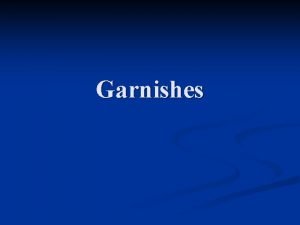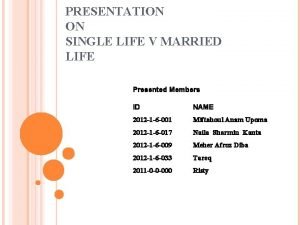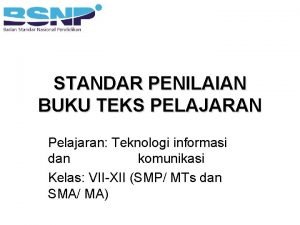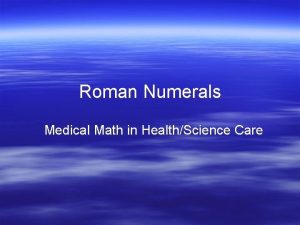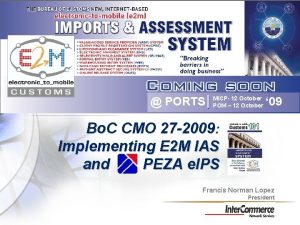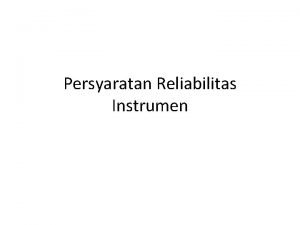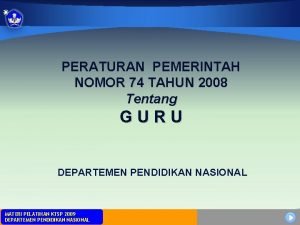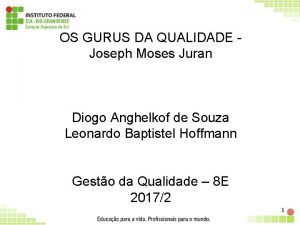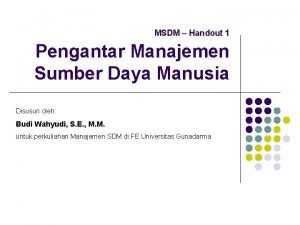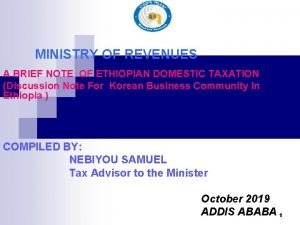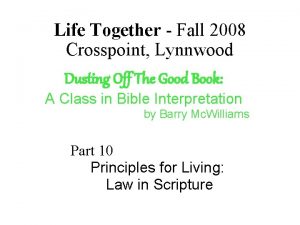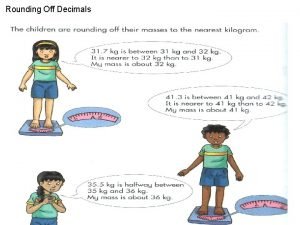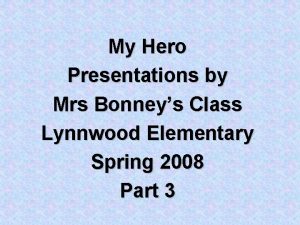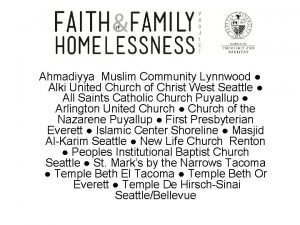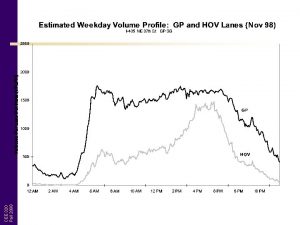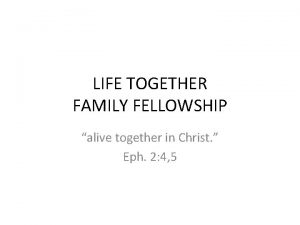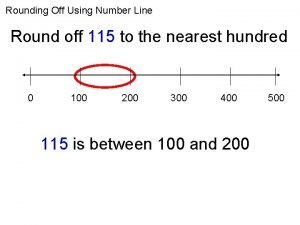Life Together Fall 2008 Crosspoint Lynnwood Dusting Off

































- Slides: 33

Life Together - Fall 2008 Crosspoint, Lynnwood Dusting Off The Good Book: A Class in Bible Interpretation by Barry Mc. Williams Part 11 The Writing Prophets

The Writing Prophets: Forth-Telling The Character of God As “enforcers of the Covenant” – The Prophets were preachers speaking the word of God to a contemporary culture that needed to be challenged to cease its resistance to the word of God, calling the people back to obedience. . The prophetic books teach us much about God’s character - His Holiness, Justice, Mercy, Love, Patience and Sovereignty over the nations; as well as how He responds to our sin.

“Forth-Telling” The prophets wrote to upbuild, encourage, console, edify, rebuke, convert, warn, and instruct the people of God of their day. “The prophets boldly rebuked vice, denounced political corruption, oppression, idolatry and moral degeneracy. They were preachers of righteousness, reformers, and revivalists of spiritual religion, as well as prophets of future judgment or blessing. They were raised up in times of crisis to instruct, rebuke, comfort and warn ISREAL, the nations, and the messianic kingdom. "

Major and Minor Of the hundreds of prophets which God raised up in Israel’s history, we have only written collections of oracles of just sixteen prophets. The only difference between “major” and “minor” prophets is the amount of written oracles collected. Isaiah Jeremiah Ezekiel Daniel Hoshea Joel Amos Odediah Jonah Micah Nahum Habakkuk Zephaniah Haggai Zechariah Malachi

Historical Settings: The Prophets wrote between 760 B. C. and 460 B. C. - just 300 stormy years out of nearly 1400 years of Israel’s history. The nation was been divided by civil war into two kingdoms in conflict with each other and with the nations around them - both their neighbors: Edom, Ammon (Syria), Moab, and Tyre; and caught in the middle of the struggles of the superpowers: Assyria, Eygpt, Babylon, and Persia. These years were characterized by : unprecedented political, military economic and social upheaval; an enormous level of religious unfaithfulness disregard for the original Mosaic covenant Shifts in populations and national boundaries.

The Divided Kingdoms The Strong Kingdom of David and Solomon was fractured into the Divided Kingdom in 920 BC. Israel made Samaria its capital and went through nine Dynasties of wicked kings before fallin to Assyria in 722. The Line of David continued in Judah through 22 kings. Some were good but many of them were unfaithful to God and His Covenant Despite occaisional periods of reform, both kingdoms went down hill spiritually. The Prophets were called to confront and proclaim God's Word to these Kingdoms.

Neighboring Peoples Phoenicia: Tyre and Sidon Isreal and Judah found themselves in either alliances or wars with each other and their nearby neighbors Philistia: Eygpt Assyrians Syria and Damasus Ammon and the Arameans Edom Moab The Prophets brought God's Word regarding them as well.

Ninth Century Prophets Elijah and Elisha were significant prophets, but neither left us any thing written. Obediah and Joel were likely 9 th Century B. C. contemporaries of Elijah and Elisha.

Three Crises struck in the The eighth Century B. C. • The fall of Samaria to Assyria in 722; • The invasion of Sennacherib of Assyia in 701 B. C. • An alliance of Syria and Israel in 734 B. C. Hosea and Amos were prophets in Isreal in the North, Isaiah to Judah in the South, Micah was at work in both kingdoms; Jonah met his whale during these times. Nahum foresaw Assyria’s destruction (with the rise of Babylon)

The Neo-Assyrian Empire was a period of Mesopotamian history which began in 934 BC and ended in 609 BC. During this period, Assyria assumed a position as a great regional power, vying for dominance of the region, though not until the reforms of Tiglath-Pileser III in the 8 th century BC, did it become a powerful and vast empire with Ninevah as its capital. Assyia's kings were engaged in constant and viscious warfare and during the reigns of Sargon II and Sennacherib both Isreal and Judah involved in wars with their neighbors were caught in the midst of these power struggle as well. . Isreal was conquered and carried off in 722 BC.

Seventh Century: The Decline and fall of Judah Habbakuk, and Zephaniah prepared the way for reform. Judah experienced a revival under Josiah in 621 B. C. abruptly ending with his death in 609. Jeremiah’s “weeping” ministry began with that hope, but saw the tragic decline and fall of Jerusalem in 686 B. C. before being carried off to Eygpt.

BABYLON 626 – 539 BC Nabopolassar crowned himself the king of Babylon and revolted against the Assyrians. An alliance between the Chaldeans and Medes formed they captured and torched Nineveh in 626. In 605 B. C. . his son, Nebuchadnezzar, was crowned the king of the Neo-Babylon Empire; earlier that year his army had defeated the Egyptians He rebuilt Baylon and its famous Hanging Gardens. In 586, Judah was defeated and its population deported beginning the Exile. Kings after Nebuchadnezzar were generally weak and short lived, and the once mighty empire faded into a period of decline. Babyon fell to the Cyrus and the Persians in 536 BC

The Prophets of the Exile Ezekiel (carried off to Babylon as a captive in 597 B. C. ) ministered to the exiles explaining “why? ” then offering hope. in a New Covenant. Daniel’s 70 years as a prophet saw Babylon fall to Persia and far beyond them to Greece and Rome and intertestamental times.

The Persians Cyrus the Great took over the empire of the Medes, and conquered much of the Middle East. Cambyses, Cyrus's son. continued his conquests by conquering Egypt. Darias the Great was the foe of the classical Greek states at Thermopylae and Salamis. . Daniel saw Babylon's fall and Persia's triumph. It was under the Persians that Judah's captivity came to its end as a remnant including Ezra and Nehemiah returned to Jerusalem. Esther became a Queen during the days of Darias.

The Return to Jerusalem Prophets to the Remnant Haggai, Zechariah and Malachi were prophets among the remnant that returned to rebuild Jerusalem and the Temple in the times of Ezra and Nehemiah. Prophet images from watercolors by James Tissot (1836 -1902)

Preparing for Messiah The Prophets added much to the expectation of the Messiah's coming. The Old Testament, written over a period of 1000 years and written several hundred years before the time of Christ, contains some three hundred prophecies of the coming Messiah. How rich a portrait of Jesus Christ comes to us in Isaiah, Jeremiah, Ezekiel, Daniel, Micah, Zechariah, Malachi, and the other prophets.

Organization The prophetic books were written collections of “Oracles” Sometimes chronological, sometimes topical. Sometimes they are dated, often not. Divisions are not always clear, nor are remarks and transitions always pr • Unconditional - do not depend for fulfillment on any mortal’s obedience - typically found in a covenant structure - such as the covenant with Abraham (Gen 15), the Messianic prophecies and God’s plan of redemption. • Conditional - consequences that will result from either obedience or disobedience to God’s Word - each has an “if” or “unless” attached to it. (example: Jer 18: 7 -10). While primarily corporate, they may sometimes apply to individuals as well (Such as Ahab). • Sequential - “now. . . and not yet” prophecies - placing together several events in one prediction though they are fulfilled in a sequence of events over perhaps a lengthy period. Sometimes these have both an “already fulfilled” and “not-yet-fulfilled” aspects. (1 John 1: 18, 4: 3)

Blessings and Curses The bulk of the writing prophets’ messages were concerned with the blessings and curses of Leviticus 26: 1 - 39; Deuteronomy 4: 15 - 40; and 28: 1 - 32: 42: Blessings for Covenant faithfulness: life, health, prosperity, agricultural abundance, respect and safety. Curses for Covenant unfaithfulness: death, decease, drought, dearth, danger, destruction, defeat, deportation, destitution, and disgrace.

Future Perspectives Prophetic Fore-Shortening It is important to realize the prophets have a different perspective, especially in regard to time. Events are often compressed, foreshortened, scrambled - neither - systematically or chronologically laid out. They often viewed the “mountain peaks” of God's revelation without grasping the “valleys” (long periods of time) between. And sometimes the Prophet would line up the “gunsights” of similar events, without seeing the distance between them. Use of “Prophetic Perfect” Hebrew had no future tense- so often the tense of completed action would be used, expressing the certainty this would come to pass, Isa 9: 6, 11: 9, Num 24: 17

Prophetic Forms The prophets received their messages in a variety of ways: dreams and visions, direct revelation, at times receiving God's word while in an ecstatic state. The Scriptures are clear that there were false prophets and gives the tests for a true Prophet. The content of their messages was important. There were three basic ways they proclaimed this message from God: They preached the message, they wrote it, and at times, acted it out symbolically. In all three, it is the content that is most important. False prophets prophesied in similar ways, the difference lies not in the form it was given, but in the content

Kinds of Oracles Some of the most common written forms that oracles take include: Lawsuit: (God portrayed as plaintiff, prosecutor, judge, bailiff in a court case against Israel, the defendant) (Isa 3: 13 -26, Micah) Woe: (Announcement of distress, the reason, and a prediction of doom) (Hab 2: 6 -8; Micah 2: 1 -5; Zeph 2: 5 -7), Cf. Lamentations War: (Announces judgment as carried out through a battle: call to alarm, description of attack, prediction of defeat) (Hosea 5: 8 -10) Promise: (Salvation Oracle) (Reference to the future, mention of radical change, and blessing) (Amos 9: 11 -15; Hosea 2: 16 -20; 2: 21 -23; Isa 45: 1 -7; Jer 31: 1 -9)

Kinds of Oracles Formulas: Some phrases are used so frequently they became technical terms: “Thus says the Lord . . . or the Word of the Lord to. . . ”; “In the latter days, . . . or in the last days, . . . ” ; “The day of the Lord. . . ”; “The Lord comes. . . ”; “Restore the fortunes of my people or return the captivity”; “The remnant shall return” “The dwelling (or tabernacle) of God is with men”; and “The kingdom of God” are examples. Illusions: There are many illusions to daily life & nature; to past events such as creation, Paradise with its rivers and trees, the flood, Sodom and Gomorrah, the Exodus, the wilderness experience with the pillar of fire and cloud, the valley of Achan, etc. ; and to historical persons: Elijah, Joshua, David, etc. (Haggai 2: 20 -22 cf. Deut 29: 23, Exo 15: 1, 5, Judg 7: 22).

OBJECT LESSONS AND SYMBOLIC ACTIONS Examples: Hosea’s marriage; Amos’ five visions ((7 -9: 8); Jeremiah’s linen waistband (13), the potter’s jar (18, 19), baskets of figs (24); Ezekiel’s “toy soldiers” (4), sleeping habits (4), shave and hair cut (5), vine allegory (15), whoring sisters allegory (25), valley of bones (37), New Temple (40 ff); Daniel’s statue (2), 4 beasts (7); Zechariah’s myrtle trees (1), measuring line (2), gold lampstand (4), flying scroll (5), chariots (6), Joshua’s crowning (6)

Predictive Statistics Compiled by J. Barton Payne 31, 124 Verses in the Bible 8, 352 Verses with predictive material (27%) OT - 6, 641 verses out of 23, 210 total (28. 6 %) NT - 1, 711 verses out of 7, 914 total (21. 6 %) The only books without predictive material are: Ruth, Song of Songs, Philemon and 3 John. 737 Separate Predictive Topics are dealt with. 65% are simple oracles, 9. 5% figurative predictions 4. 5% symbolical dreams and object lessons 21% “types” (34% of verses)

Predictive Statistics Compiled by J. Barton Payne Books with highest percentage of predictive prophecies: OT Ezekiel (63%), Jeremiah (60 %) and Isaiah (59%) NT Revelation (63%), Matthew (26%) and Luke (23%) Less than 2% of OT Prophecies are Messianic Psalms - 101 verses of 13 Psalms, Isaiah - 59 verses, Less than 5% describe the New Covenant Age, Less than 1% - events yet to come.

Biblical Symbolism One of the richest sources of spiritual truths in the Scriptures is the use of symbolism. The concepts and images conveyed in symbols and types give unity to the Scriptures and focus our hearts on the center of the Scriptures, Jesus Christ, The Alpha and Omega, The Light of the World, The Lamb of God. The Bread of Life, The Living Water, The Way, The Truth and The Life, The Good Shepherd, etc. They point us to His person and work - what He has done and is yet to do.

Biblical Types are pictorial representations of Christ and redemption. Prophecies that are acted out rather than spoken. The word comes from a Greek word meaning “to strike” as a hammer striking a die and leaving an impressed image or pattern. The “type” is the impression, the die would be its “antitype”. Scripture’s types are preordained actions or objects which are “shadows”(Hebr 10: 1), “examples” (1 Cor 10: 6), “copies” or “patterns” i. e. prefiguring (Hebr 8: 5) what would come to fulfillment in Christ and His

A Type can be defined as a “divine enactment of future redemption” Types: an action that represents a teaching of double import: its truth was a reality to its contemporaries (the shadow), and yet it pictures an aspect of Gods redemption (the reality) at the same time. Types may be events, objects, persons, things, institutions, or ceremonies. Most Biblical types have are identified as such by Scripture. Types must be of divine origin be redemptive in focus be pictorial be future.

TYPES fall in six categories Persons - like Adam, Melchizedek, or Elijah; Events like the flood, the Exodus, the raising of the bronze serpent, or striking water from the rock; Objects like the Tree of Life, the Tabernacle and its various furnishings; Offices like Moses as a Prophet, or the priesthood; Institutions like the sacrificial system, and the Sabbath Ceremonies. like Passover, releasing the scapegoat, or the feast of Tabernacles.

TYPES We are encouraged to look for Types in the Bible by the unity of the Old and New Testaments and the relationship of them to each other - since what is latent in the former becomes patent in the latter. The Lord himself encourages us by inviting us to search the Scriptures for they speak of Him. (Luke 24: 25 -44; John 5: 39 -44). Certainly the identifications of typical elements in the Old Testament by New Testament writers, especially the book of Hebrews, but also Jesus, Peter and Paul, encourages us in this as well.

SYMBOLS A symbol in scripture could be described as a fact that teaches a moral or spiritual truth. It is an image or sign of something else. A Symbol has basically two elements: the conceptual idea and the image which represents that idea. Symbols may refer to things past, present or future. They usually come out of the common everyday things of life of a particular culture, the geography, flora and fauna, customs, etc. It is because symbolism is so closely tied to a particular culture that we often have difficulty in understanding a particular symbol, its significance being lost with the passage of that culture.

SYMBOLS Symbols are found in various forms as well: they may be persons - like Elijah or Moses. They may be objects like the rainbow, the bronze serpent, the golden calves, the ark, the tabernacle and its furnishings, a lamb, a lion, etc. Names are used as symbols- often being very significant in the Old Testament. Actions may be symbolic - Israel’s deliverance from Egypt, the humiliation of David, Jacob's wrestling with the Lord (cf. Gen 32, Hos. l 2: 2 -4) The feeding of the 5, 000, etc. It should be noted that many of Jesus' miracles were symbolic, they represented the coming blessings of the kingdom and Jesus' redemptive work.

Interpretation of Types and Symbols We need ro start with the foundation of those which are interpreted as our foundation. Where the New Testament testifies clearly to the proper interpretation we may have confidence. If the symbol is not interpreted, we should investigate the context thoroughly for insights into the interpretation, use a concordance for other usage, and consider carefully the nature of the symbol. Salt is a symbol because of its preservative qualities, A lion is a symbol because of its power and ferocity, Pigs are a symbol of filthiness, etc. Some symbols require the light of archaeology and comparative studies. It is best to be silent rather than to speculate.
 Dragon park lynnwood
Dragon park lynnwood 2008 2008
2008 2008 Metal dusting protection
Metal dusting protection Types of garnishes
Types of garnishes Powder and granules dosage form
Powder and granules dosage form Divided powder example
Divided powder example Mixing of powders in pharmaceutics
Mixing of powders in pharmaceutics Trituration vs levigation
Trituration vs levigation Vragen
Vragen Sing together lyrics
Sing together lyrics Together chorus lyrics
Together chorus lyrics Elbows off the table fingers off the food song
Elbows off the table fingers off the food song Fall off test
Fall off test Single life and married life
Single life and married life Ipam asm
Ipam asm 2008-2009 school year
2008-2009 school year Vik gimnázium
Vik gimnázium Projekt vera 3
Projekt vera 3 Upgrade 2003 to 2008
Upgrade 2003 to 2008 2008 generation called
2008 generation called Urip purwono, 2008 standar penilaian buku pelajaran
Urip purwono, 2008 standar penilaian buku pelajaran Ssis 2008 training
Ssis 2008 training 2008 in roman numerals
2008 in roman numerals Kko:2008:57
Kko:2008:57 Pseudoparenchymatous algae
Pseudoparenchymatous algae Vasp customs
Vasp customs Sukardi 2008
Sukardi 2008 Pp nomor 74 tahun 2008
Pp nomor 74 tahun 2008 Gurus da qualidade
Gurus da qualidade Nom 001
Nom 001 Tujuan fungsional msdm
Tujuan fungsional msdm Stamp duty(amendment) proclamation no. 612/2008
Stamp duty(amendment) proclamation no. 612/2008 Copyright 2008
Copyright 2008 Www.middleschoolscience.com 2008
Www.middleschoolscience.com 2008



